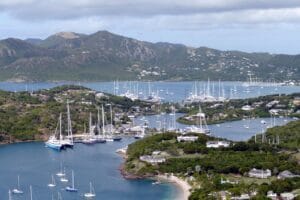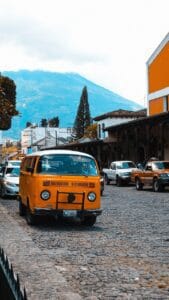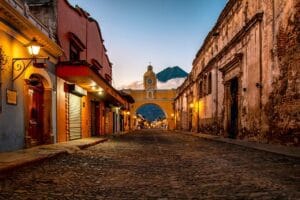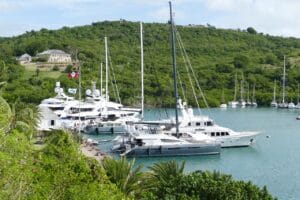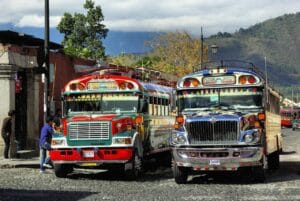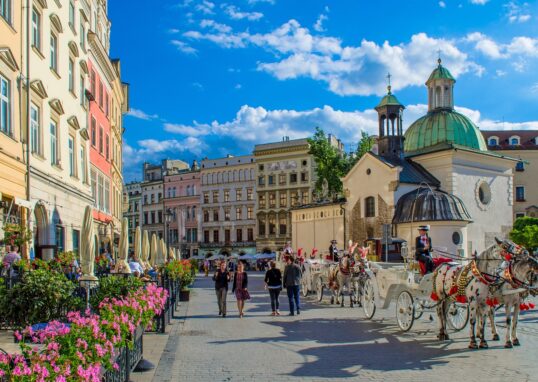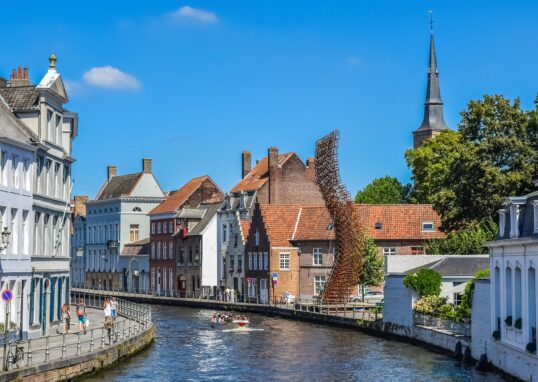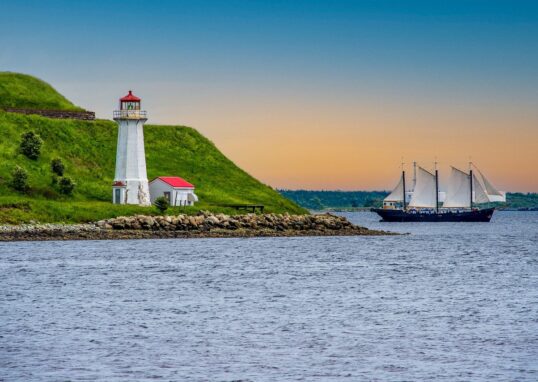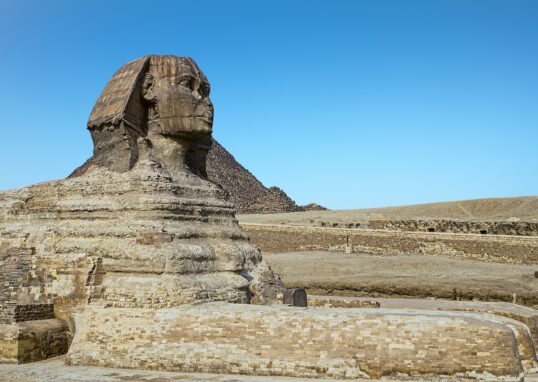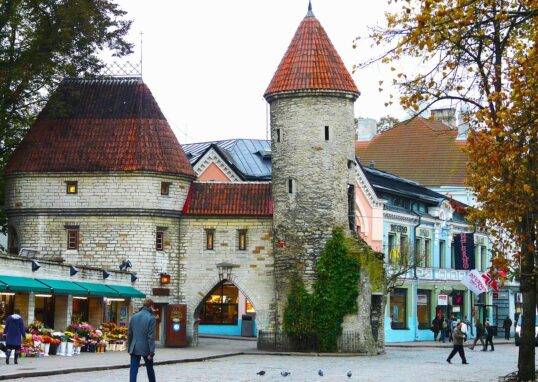
Antigua and Barbuda: The Twin-Island Paradise of the Caribbean
Antigua and Barbuda is a tiny Caribbean island nation. It is made up of two large islands: Antigua and Barbuda. There are a few smaller islands around them, including Redonda. They all form one nation together. The islands have white sandy beaches, blue crystal clear waters, and warm sunshine. Many call them a paradise. They attract visitors from all over the world. In this guide, we will explore Antigua and Barbuda thoroughly. We will see their history, geography, culture, cuisine, and sights. We will also explore the surrounding places in the Caribbean that form more of a traveler’s experience.
Location and Geography
Antigua and Barbuda are located in the eastern Caribbean Sea. They are part of the Lesser Antilles. Antigua is the larger island. It is about 281 square kilometers in size. Barbuda is smaller at about 161 square kilometers. Redonda, the third island, is small and uninhabited. Antigua is rolling hills, small mountains, and many bays. The island is made up of coral reefs and limestone. Barbuda is flat. It has very large sandy beaches, lagoons, and bird sanctuaries. Coral reefs encircle the islands. The reefs protect the shores and attract sea life.
History of Antigua and Barbuda
Indigenous Peoples
Long before the Europeans came, the islands were populated by Indigenous peoples. The Ciboney were the first. Later, the Arawak and Carib peoples came. They fished, farmed, and built villages. They grew crops like cassava, corn, and sweet potatoes.
European Colonization
Christopher Columbus came to Antigua in 1493. He named it “Santa María de la Antigua,” after a church in Spain. But the Spanish never colonized it. The English colonized Antigua in 1632. Barbuda was colonized afterwards in 1678. The English planted sugarcane. They brought Africans as slaves to work on the plantations. Slavery shaped the history and culture of the islands.
Emancipation and Independence
Slavery was abolished in 1834. After that, many emancipated Africans stayed on the islands. They were farmers, fishermen, and traders. In the 20th century, Antigua and Barbuda moved towards self-government. They gained independence from Britain in 1981. Now they are members of the Commonwealth, with a parliamentary type of government.
Culture of Antigua and Barbuda
The culture is a mix of African, British, and Caribbean. Music, dance, and festivals play an important role.
Language and Religion
English is the official language. Most also speak Antiguan Creole in their daily lives. The dominant religion is Christianity with many Anglican, Methodist, and Catholic churches.
Music and Festivals
The islands are famous for calypso, reggae, and soca music. The steelpan drum is also favored. Carnival is the biggest celebration. It is held in July and August. There are brightly colored costumes, street dancing, and celebrations of freedom.
Food
The food of Antigua and Barbuda is tasty and plentiful. Some of the favorite dishes include:
- Fungee and Pepperpot: Fungee is cornmeal. Pepperpot is a stew cooked with meat and vegetables.
- Ducana: Sweet potato dumplings wrapped in banana leaves.
- Saltfish: Served with chop-up (mixed vegetables).
- Seafood: Lobster, conch, and red snapper are the staples.
Rum is the favored drink, and fresh tropical fruit juices are favored too.
Natural Beauty
Beaches
Antigua has 365 beaches, one for every day of the year. Each has its own character, from secluded coves to lively bays. Some of the famous ones are Dickenson Bay, Half Moon Bay, and Jolly Beach. Barbuda is also home to stunning beaches. Pink Sand Beach is especially famous. The sand glows with a pale pink color, created by crushed shells and coral.
Reefs and Marine Life
The waters around the islands are full of coral reefs. The reefs are home to colorful fish, sea turtles, and rays. Snorkeling and diving are popular activities.
Birdlife
Barbuda is renowned for the Frigate Bird Sanctuary. It is one of the largest in the world. The sanctuary hosts thousands of frigate birds. Watching them soar in the air is unforgettable.
Rainforests and Hills
Antigua has rainforest patches and hills. The highest point is Mount Obama (formerly Boggy Peak), which is 402 meters. There are trails to hike to view the island and sea.
Main Attractions in Antigua
St. John’s
The capital of Antigua is St. John’s. It has colorful buildings, markets, and a busy port. Attractions include:
- St. John’s Cathedral: A historic church with twin towers.
- Museum of Antigua and Barbuda: Chronicles the islands’ history from pre-Columbian era to independence.
- Heritage Quay: A shopping center near the cruise port.
Nelson’s Dockyard
This is a UNESCO World Heritage Site. It was a British naval base in the 18th century. It is well preserved and has museums, shops, and restaurants. It is also a yachting center.
Shirley Heights
This is a lookout point with stunning views of English Harbour and the coastline. On Sundays, there are parties with music, barbecue, and dancing. It is a popular place for locals and tourists alike.
Betty’s Hope
This was a huge sugar plantation back in colonial times. Today it’s a heritage site. The windmills and ruins tell the story of slavery and plantation life.
Main Attractions in Barbuda
Codrington
This is the main village in Barbuda. It’s quiet and small. You can meet locals, sample food, and learn about island life.
Frigate Bird Sanctuary
The sanctuary in Codrington Lagoon has more than 150,000 frigate birds. Visitors are taken close to the nests by boat tours.
Pink Sand Beach
The beach stretches for miles. The pink sand and peaceful beauty of the beach are some of the most beautiful in the Caribbean.
Caves
Barbuda has limestone caves with petroglyphs of Indigenous people. The most famous is Indian Cave.
Tourism in Antigua and Barbuda
Tourism is Antigua and Barbuda’s biggest industry. Beaches, sailing, and culture attract tourists. The islands host many international yachts and cruise ships.
Activities for Tourists
- Sailing and Yachting: Antigua is known as the Caribbean’s sailing capital. The annual Antigua Sailing Week is a world-class regatta.
- Snorkeling and Diving: Diving is exciting with coral reefs and wrecks.
- Hiking: Hiking trails traverse hills, rainforests, and coastline.
- Birdwatching: Especially in Barbuda’s lagoon.
- Beach Relaxation: Some tourists just like the sun and ocean.
Accommodations
Luxury resorts, boutique hotels, and guest houses are available. Some are all-inclusive. Some are small and intimate. Eco-lodges are becoming increasingly popular.
Economy Beyond Tourism
Although tourism is the mainstay, the islands also depend on fisheries and agriculture. Small farmers produce fruits and vegetables. Fisheries supply lobsters and fish. There is also an offshore financial sector. However, the most jobs are created by tourism.
Surrounding Places Near Antigua and Barbuda
Antigua and Barbuda are beautiful on their own. Yet, the Caribbean is full of surrounding islands and countries that make the visit even more rewarding. Most visitors to Antigua also visit the surrounding islands. Each one has its own culture, history, and natural beauty. Together, they offer a total Caribbean experience.
St. Kitts and Nevis
Location and Landscape
St. Kitts and Nevis are islands to the west of Antigua. They are two islands that form one country. St. Kitts is larger, while Nevis is rounder and smaller. They are volcanic islands. They both have green hills, rainforests, and beaches.
Culture and Heritage
The culture is a blend of African, European, and Caribbean cultures. The people are warm and welcoming. The official language is English. Cricket and music are an important part of daily life.
Main Attractions
- Brimstone Hill Fortress: This UNESCO World Heritage Site is a large fortress built by the British. It offers expansive views of the sea and neighboring islands.
- Basseterre: The capital of St. Kitts has colonial architecture, markets, and a busy port.
- Nevis Peak: Nevis hikers can climb this volcano. The trek is rainforest and has great views.
- Beaches: Both islands have golden beaches, like Pinney’s Beach in Nevis and South Friars Bay on St. Kitts.
Why Visit?
St. Kitts and Nevis are quiet and scenic. They mix history and nature. They are easily reached by air or sea from Antigua.
Montserrat
Location and Landscape
Montserrat is situated southwest of Antigua. It’s often called the “Emerald Isle of the Caribbean” because of its lush green hills. The island is volcanic. In the 1990s, the Soufrière Hills Volcano erupted and reshaped the island for good. Ash and lava buried the capital, Plymouth.
Culture and Heritage
Despite the eruption, Montserrat has strong Irish and African influences. This mix gives it a unique identity. St. Patrick’s Day is a big celebration here.
Main Attractions
- Soufrière Hills Volcano: It is possible to visit the volcanic exclusion zone with guides. It illustrates how nature reshapes landscapes.
- Montserrat Volcano Observatory: The science of the eruption is explained at this facility.
- Little Bay: The new town that has become the main port and center of activity.
- Hiking Trails: There are still rainforest and green hill trails on the island.
Why Visit?
Montserrat offers adventure and learning. It is smaller and less populated, but it has a dramatic story to tell. There are ferries and small flights from Antigua to Montserrat.
Guadeloupe
Location and Landscape
Guadeloupe is a French overseas department south of Antigua. It forms a butterfly shape when seen from the air. The western wing, Basse-Terre, is volcanic and mountainous. The eastern wing, Grande-Terre, is rolling and lined with beaches. There are smaller islands that are part of Guadeloupe as well.
Culture and Heritage
Guadeloupe is a blend of French culture and Creole traditions. The official language is French, but Creole is also widely spoken. Music, dance, and cuisine demonstrate this rich blend.
Main Attractions
- Parc National de la Guadeloupe: On Basse-Terre, the park protects rainforest, waterfalls, and the active volcano La Soufrière.
- Grande-Terre Beaches: The eastern coast of the island has long sandy beaches like Sainte-Anne and Le Gosier.
- Pointe-à-Pitre: The capital city has markets, museums, and a busy port.
- Cuisine: Creole cuisine is a specialty, with spices, seafood, and rum.
Why Visit?
Guadeloupe offers adventure and relaxation. Nature, beaches, and culture are easily accessed. Flights and ferries from Antigua are an easy day trip.
Dominica
Location and Landscape
Dominica is located south of Guadeloupe. It is often called the “Nature Island of the Caribbean.” It is volcanic and mountainous. The island has dense rainforests, hot springs, and rivers.
Culture and Heritage
The Indigenous Kalinago people still occupy Dominica. They add to the cultural wealth of the island. The main language is English, and there is a French Creole spoken as well.
Main Attractions
- Morne Trois Pitons National Park: UNESCO World Heritage Site with boiling lakes, waterfalls, and volcanoes.
- Trafalgar Falls: Twin waterfalls cascading into clear pools.
- Emerald Pool: A green pool in the rainforest that’s ideal for swimming.
- Hot Springs: The island’s volcanic activity creates some natural hot springs.
Why Visit?
Dominica is perfect for eco-tourists and hikers. It is less developed than other islands. It offers true nature and peace. Antigua is connected with Dominica via short flights and ferry.
Saint Lucia
Location and Landscape
Saint Lucia is located further south of Dominica. It is one of the most famous Caribbean islands. It has mountains, rainforests, and beaches. The most famous features are the Pitons, two volcanic peaks.
Culture and Heritage
Saint Lucia is a mix of African, French, and British. English is the official language, but French Creole is widely spoken. Music, dance, and festivals are lively.
Main Attractions
- The Pitons: Gros Piton and Petit Piton rise abruptly out of the ocean. They are a UNESCO World Heritage Site.
- Sulphur Springs: The world’s only drive-in volcano. One can bathe in mineral-rich mud pools.
- Castries: The capital city, with markets, shopping, and historic landmarks.
- Marigot Bay: A scenic bay with palm trees and yachts.
Why Visit?
Saint Lucia offers romance, adventure, and natural beauty. It’s a popular spot for weddings and honeymoons. Flights from Antigua are convenient.
Saint Martin / Sint Maarten
Location and Landscape
Saint Martin is located northwest of Antigua. The island is divided in two. The French have the northern section (Saint Martin). The Dutch have the southern section (Sint Maarten). It boasts hills, beaches, and busy harbors.
Culture and Heritage
The island is unique because of its dual nationality. French, Dutch, English, and Creole cultures meet here. This renders it dynamic.
Main Attractions
- Maho Beach: Internationally famous for aircraft landing near the beach.
- Philipsburg: The capital on the Dutch side, with shopping and entertainment.
- Marigot: The French capital with markets and French cafes.
- Beaches: Over 30 beaches, each with its own personality.
Why Visit?
Saint Martin is vibrant and full of activity. It is great for shopping, dining, and nightlife. It is also a hub for flights to the rest of the Caribbean.
Anguilla
Location and Landscape
To the north of Saint Martin lies Anguilla. It is a British overseas territory. It is flat and dry compared to other islands. But it has some of the best beaches in the Caribbean.
Culture and Heritage
Anguilla is relaxed and serene. Music and food are central to life. The official language is English.
Main Attractions
- Shoal Bay: A world-famous beach with white sand and turquoise water.
- Island Hopping: Anguilla has small offshore cays like Sandy Island, perfect for day trips.
- Music: Live music and beach bars are part of Anguilla’s charm.
Why Visit?
Anguilla is peaceful and less crowded. It is ideal for relaxation and luxury.
How Surrounding Islands Add to an Antigua Trip
Travelers often combine Antigua and Barbuda with these surrounding places. Each island offers something different:
- St. Kitts and Nevis: History and hiking.
- Montserrat: Volcano and resilience.
- Guadeloupe: French culture and beaches.
- Dominica: Rainforest and eco-tourism.
- Saint Lucia: Romance and the Pitons.
- Saint Martin: Shopping and nightlife.
- Anguilla: Peace and world-class beaches.
Together, they form a circle of experiences around Antigua and Barbuda.
Why Visit Antigua and Barbuda?
There are many reasons:
- 365 beaches, each with unique charm. Warm and sunny weather all year. Rich culture, music, and festivals.
- Sailing and yachting events. Friendly people and relaxed lifestyle. Easy access to surrounding Caribbean islands.
Conclusion
Antigua and Barbuda are Caribbean jewels. They offer a mix of natural beauty and rich history and culture. Antigua offers busy towns, historic sites, and busy harbors. Barbuda offers peace, bird sanctuaries, and pink beaches. Together, they create a perfect balance. The surrounding islands of St. Kitts, Montserrat, and Guadeloupe add even more to the journey. They bring mountains, volcanoes, and cultural flavors. A visit to Antigua and Barbuda is more than a holiday. It is an experience of sun, sea, history, and Caribbean lifestyle.

